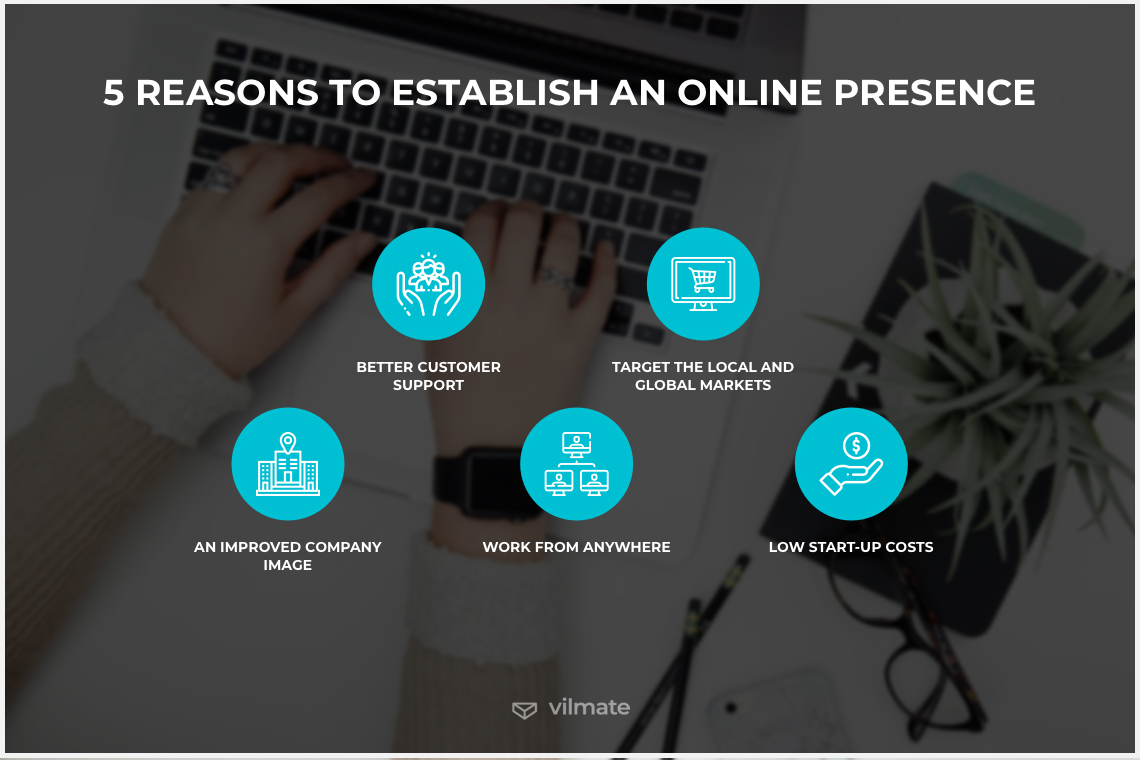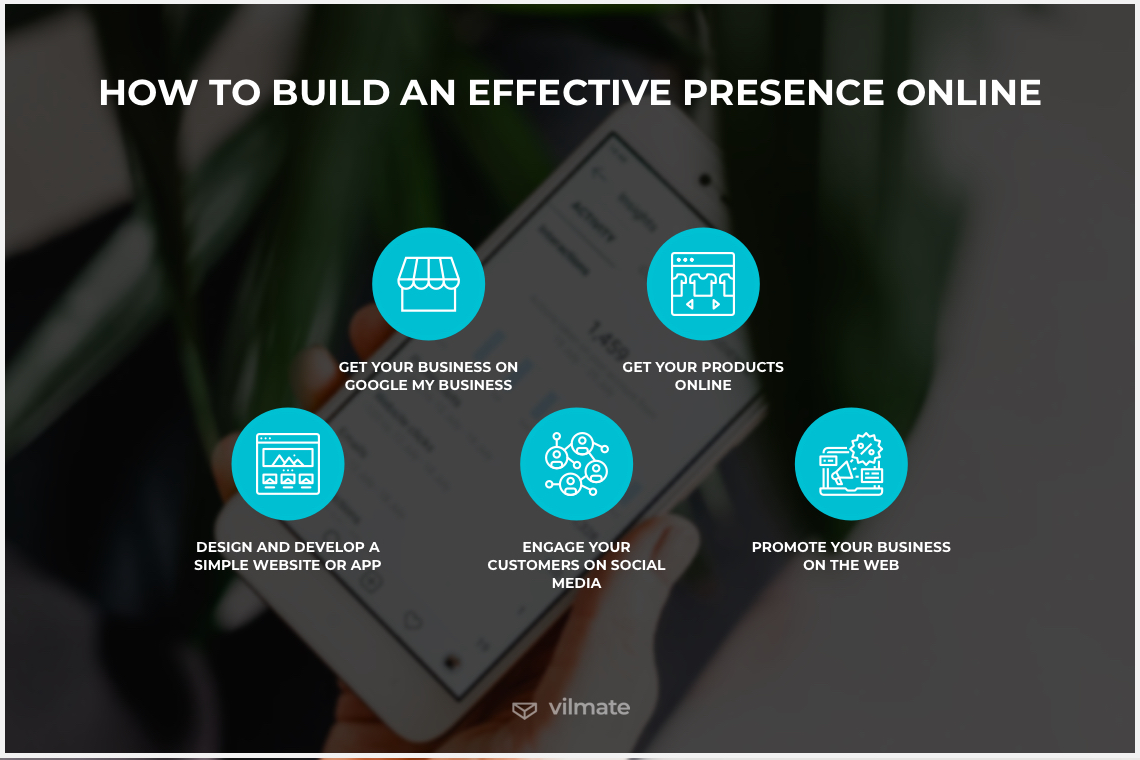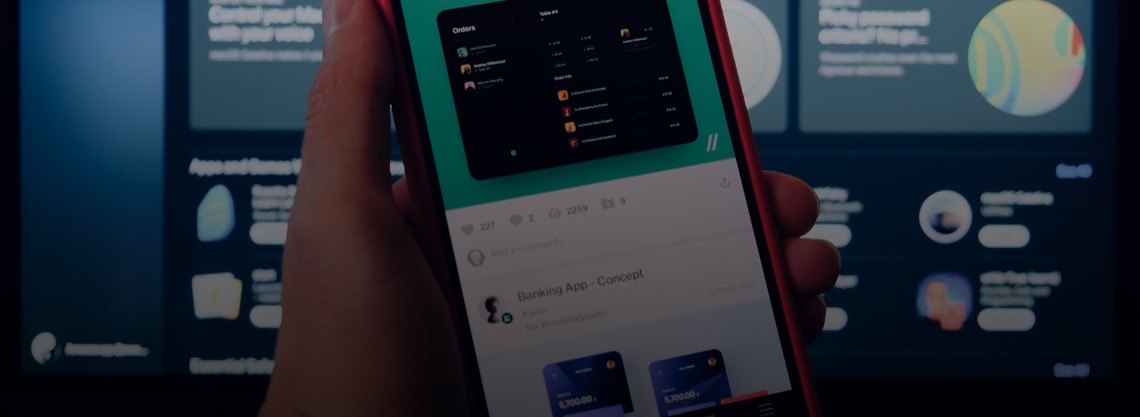5 Reasons for Your Offline Business to Have an Online Presence
articlese-commercemobile appsweb developmentWhat happens when you google a company name? You may find the official website of this company on the first page of search results. Or you may be forced to be learning bits and pieces around the web when no official online presence is established. So, now think about how many businesses from your neighborhood are or aren’t online. Chances are many of them avoid going digital. They may think it would be expensive and difficult to start or that it would bring them no benefits at all.
In reality, these assumptions will most probably prove wrong. A traditional brick-and-mortar business that serves clients in person should try and set up its online presence. At first glance, this process may be very similar to starting an online business. But it is not the same. It is not too complicated nor too risky. So, we would like to give you five reasons to create an online presence for an offline business.
- An improved company image
- Better customer support
- Work from anywhere
- Target the local and global markets
- Low start-up costs

1. An improved company image
Help customers find you. And if they are (at least a little) interested, they will be searching for you on the web. For most customers, a business is first introduced by discovering it online. The better your online presence is, the more people will learn about you and the services or products you provide. A website, blog, or any information about you that can be found on the web can tell people how serious you are about your business, even if you don’t plan on selling online. For starters, keep your website simple to include:
- A bio
- Contact information
- Testimonials
- A blog
The company’s physical address and other contact-related details are essential data to be made visible, but this is not all one should put on display on their site. A website is a tool for completing and perfecting a brand image, so it should tell a good story about a company. Building a website, you should decide what content to present there so that to help to form a positive impression of your company in the potential customer’s mind. In general, you should tell a company’s story in terms of its history and achievements. Emphasis should be placed on the main product or service being sold and what it does for customers, this also includes its impact on the society at large.
Besides this, an improved company image is also an excellent way to demonstrate that a company is growing and profitable, which is something nice to know for potential investors. As an addition, you may consider developing a mobile app to support your business’ online presence.
2. Better customer support
Having an online image means you can interact with more customers in real time. Not only is it enough to have a website, but also this website must be managed well. For most brick-and-mortar businesses, it is not an option to provide 24-hour service to customers. However, on your company’s website, your clients and prospects should be in a position to get any information of interest at any time.
People can use contact forms or live chats to communicate with you. Also, create space for them to leave reviews and comments, ask for and exchange information. Part of your job is to build relationships, and one of the best ways to do that is to make customers feel at home when using your site. It’s okay to be quick to respond and apologize if they have a problem. Communicating with customers who are new to your business or have complaints can be painful. Just keep it positive and ask them if they have any questions.
The top tips for better customer service empowered by a web presence:
- be available in real time
- make it easy for people to contact you
- walk customers through your solution
- nurture relationships with your customers
- invest in your customer service team
- offer upfront access to information
- link online and offline customer experience
3. Work from anywhere
Brands are targeting the creation and utilization of multiple distribution channels for a closer connection with customers. The omnichannel bricks-and-clicks business model allows operating both online and offline. It benefits from the two worlds: a physical presence allows humanizing a brand and provides memorable shopping experiences, and an online presence helps maintain the convenience and excellent customer service.
What is more, bricks-and-clicks businesses with a strong digital presence can let at least part of their personnel work remotely. So, as long as they have a solid Internet connection, they can work from anywhere. This enhanced flexibility can boost productivity, save time, and increase profits. Naturally, some areas of work may be difficult or impossible to do remotely. Therefore, traditional offline businesses can start small and scale up later to support brand recognition, marketing efforts, customer service, relationship building, and more remotely.
4. Target the local and global markets
Extend the local reach of your business to the masses by increasing the number of direct relationships with customers. It depends, however, whether you want more people at a local level to find out about you or you are targeting the global market. In fact, one of the issues on a localization-centric strategy is finding the right balance between the local and the global. As your business grows, the local reach grows, too. So, at some point, limitations on how far your local reach extends may occur. In many cases, at a time when your local reach is limited, you might find yourself trying to attract more potential customers.
The solution to this issue is to widen the scope of your strategy. Establishing an online presence is the first step on this journey. A website or an app will allow you to take advantage of various markets and attract new customers with an increased chance of them converting.
5. Low start-up costs
When resolved to establish a brand’s online presence for your brick-and-mortar business, you may wonder how much it will cost. For a start, you can read through our articles on how much it costs to build a real estate website and a taxi application, or how a hospital can benefit from making a website. One way or the other, starting out online can be not costly at all for an offline business. All the costs you will incur in building an online presence and managing it for your own purposes, including marketing, are insignificant compared to launching an offline business from scratch.
Physical presence requires a high-fixed rental cost and employees to run the place, while the selection of goods and the scope of the delivered services are always limited to an extent. These drawbacks can be eliminated by establishing an online channel. There’s no need to spend thousands of dollars on your perfect website or mobile app development. A sufficiently good site or application can be quickly built at a price ranging from a few hundred to a few thousand dollars. Contact Vilmate, and we will estimate development efforts for your project.

How to build an effective presence online
Now that we know that having a web presence for a traditional brick-and-mortar business is essential these days, let’s look at some of the ways in which you can optimize it and make the most of the tools that are available to you.
Design and develop a simple website or app - As we’ve already mentioned, the simpler, the better. Your offline business doesn’t need a complex website. Make it visually engaging and easy to navigate. Then you’ll have better chances to capture and retain a visitor’s attention.
Get your business on Google My Business - By creating a free business profile on Google My Business, you can build a great profile of your business, so that it could appear in search results providing all necessary information about you, including your business hours, address, posts, photos, and even Google reviews.
Engage your customers on social media - Social media are a great way to inform your customers about the updates you have to announce. Use your social media channels to build trust and improve relationships with your audience. But remember that your brand voice can make or break your social media presence, so make sure you’ve turned it to your advantage.
Get your products online - Retailers who have traditional brick-and-mortar stores also need to make it easy for people to order products online. Design a website or an app that facilitates online order processing and delivery. For further details, please follow the link to see Vilmate’s full guide for developing e-commerce applications.
Promote your business on the web - Online advertising helps, among others, build a positive brand image and drive traffic to your website, increasing the number of sales and loyal customers. Google Ads, Facebook Ads, and Microsoft Advertising can make the foundation of your online marketing campaign. But for better results, you’d consider combining online and offline marketing efforts.
Conclusion
Whether your offline business means selling goods or delivering services, you are equally well-positioned to benefit from having an online counterpart. It will allow not only meeting customers and prospects where they already are but also providing better customer service, marketing your business more easily, and expanding it internationally. You can leverage online presence to increase sales and garner greater exposure. It might take some creative thinking and willingness to take a risk to get there, but it will be all worth it in the end.

© 2020, Vilmate LLC




